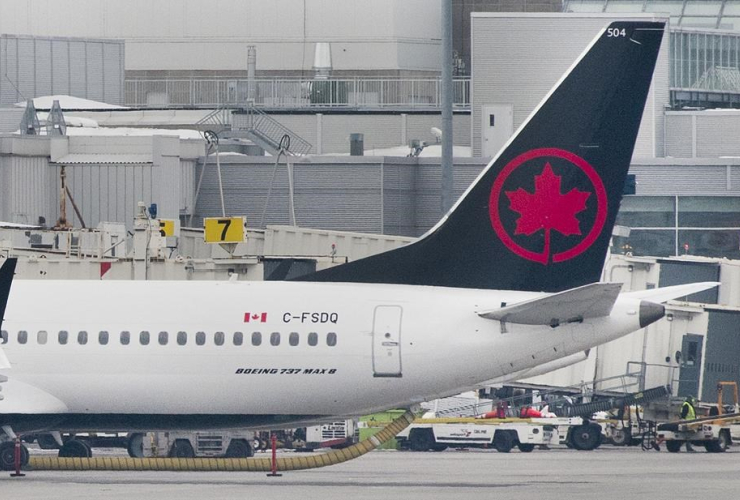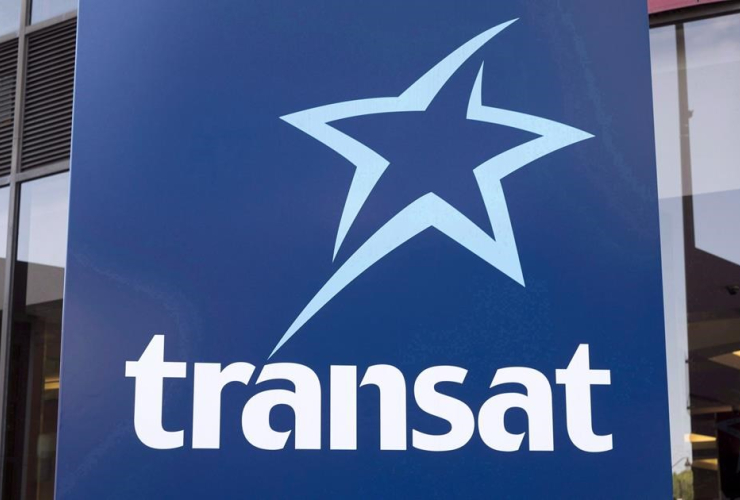Aviation experts are raising security and passenger safety concerns after a woman was left sleeping on a parked Air Canada aircraft with the lights turned off and crew gone.
"It was just a total screw up," said Ross Aimer, CEO of Aero Consulting Experts and a former airline captain, of the woman's ordeal.
Tiffani Adams fell asleep during a roughly 90-minute Air Canada flight from Quebec City to Toronto, according to a friend's recounting of the experience in a Facebook post on the airline's social media page.
When Adams woke up a few hours after the flight landed, she realized she was alone on a dark plane. Her phone died shortly after, so Adams found a flashlight in the cockpit and attempted to send an SOS signal through one of the plane's windows.
She then unbolted three latches on the main door, opened it and flagged down a nearby baggage cart operator, who rescued her.
Aimer, who has roughly four decades of aviation service, said he's never heard of such a situation and that multiple errors would have to be made to overlook a passenger during disembarking.
It's likely the flight crew was on the tail end of a multi-day set of flights and were anxious to get home as soon as possible, he said.
Typically, crew must look up and down the cabin as they leave the plane, checking for people or any items passengers may have left behind, he said.
Sometimes the crew will do a cursory clean, as well, he said, or a cleaning crew will arrive to do a more thorough job before a morning flight.
Neither of those things seem to have happened here, Aimer said, and it's possible the crew failed to check all the seats in their excitement to leave.
"So, it was kind of multiple screw ups that caused this."
Air Canada, which has confirmed the incident happened, did not immediately respond to a request for additional comment.
Aimer said a cleaning, catering or flight crew would have discovered Adams in the morning had she not been so proactive, but it's possible someone with malicious intent could hide on a plane in this manner.
"It's much easier to miss a person that is basically hiding under the seats," said Aimer.
In that scenario, a person who is trained to fly planes could possibly attempt to hijack the aircraft, he said, pointing to a recent incident out of Seattle.
In 2018, a 29-year-old airport worker named Richard Russell stole a Horizon Air Bombardier Q400 plane and took it for a 75-minute flight that ended with his death in a fiery crash. While Russell's joy ride didn't hurt anyone else, there was a nearby sold-out Pearl Jam concert that could have been a potential target.
However, other airport security measures, like a constant police and security presence monitoring the grounds, would likely hinder a hijacking, said Aimer.
Adams's experience is a freak accident, said Gabor Lukacs, an air passenger rights activist.
His biggest concern would be if the airline had left an ill or otherwise incapacitated passenger behind, who could be much more vulnerable in that situation.
The frequent airline industry critic said he appreciates Air Canada's willingness to assume responsibility and wishes they were more forthcoming in other situations.
— With files from The Associated Press
Might someone be tempted to
Might someone be tempted to "graffitti tag" the dreamliner as a nightmareliner?





Comments